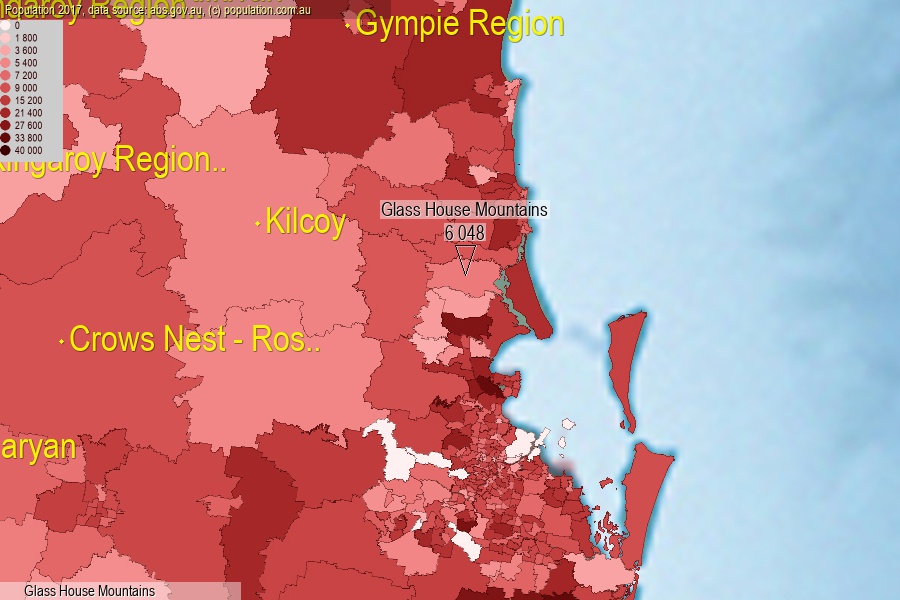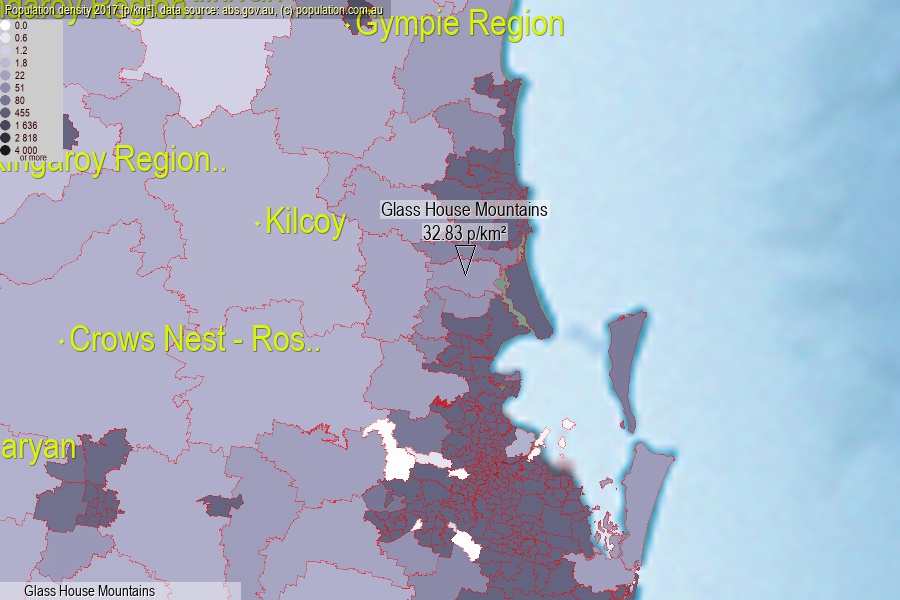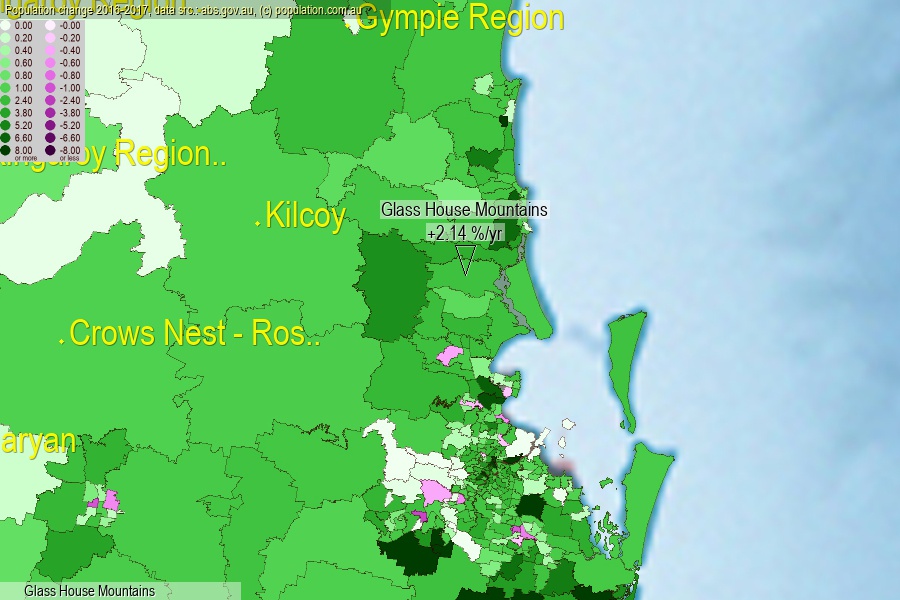 population.com.au
population.com.auLast official estimated population of Glass House Mountains (as Statistical Area Level 2) was 6 048 people (on 2017-06-30)[2]. This was 0.02% of total Australian population and 0.121% of QLD population. Area of Glass House Mountains is 184.20 km², in this year population density was 32.83 p/km² . If population growth rate would be same as in period 2016-2017 (+2.14%/yr), Glass House Mountains population in 2025 would be 7 167. [0]



Click to enlarge. Glass House Mountains is located in the center of the images.
Population [people], population density [p./km²] and population change [%/year] [2]
View borders » (new window) [4]
[1991-1992] +11.70 %/Yr.
[1992-1993] +9.28 %/Yr.
[1993-1994] +7.82 %/Yr.
[1994-1995] +9.81 %/Yr.
[1995-1996] +7.50 %/Yr.
[1996-1997] +6.70 %/Yr.
[1997-1998] +4.01 %/Yr.
[1998-1999] +2.98 %/Yr.
[1999-2000] +1.92 %/Yr.
[2000-2001] +3.39 %/Yr.
[2001-2002] +2.54 %/Yr.
[2002-2003] +2.61 %/Yr.
[2003-2004] +2.57 %/Yr.
[2004-2005] +1.69 %/Yr.
[2005-2006] +1.49 %/Yr.
[2006-2007] +1.82 %/Yr.
[2007-2008] +4.48 %/Yr.
[2008-2009] +5.24 %/Yr.
[2009-2010] +3.50 %/Yr.
[2010-2011] +1.36 %/Yr.
[2011-2012] +1.04 %/Yr.
[2012-2013] +0.54 %/Yr.
[2013-2014] +0.73 %/Yr.
[2014-2015] +0.91 %/Yr.
[2015-2016] +1.16 %/Yr.
[2016-2017] +2.14 %/Yr.
[0] Calculated with linear interpolation from officially estimated population
[1] Read more about SA2 and Australian Statistical Geography Standard (ASGS) on abs.gov.au
[2] Population data from Australian Bureau of Statistics (Population and density: 2017; change: 2016-2017)
[3] Digital Boundaries: Australian Statistical Geography Standard (ASGS) 2016.
[4] Border coordinates are simplifyed using Ramer-Douglas-Peucker algorithm.